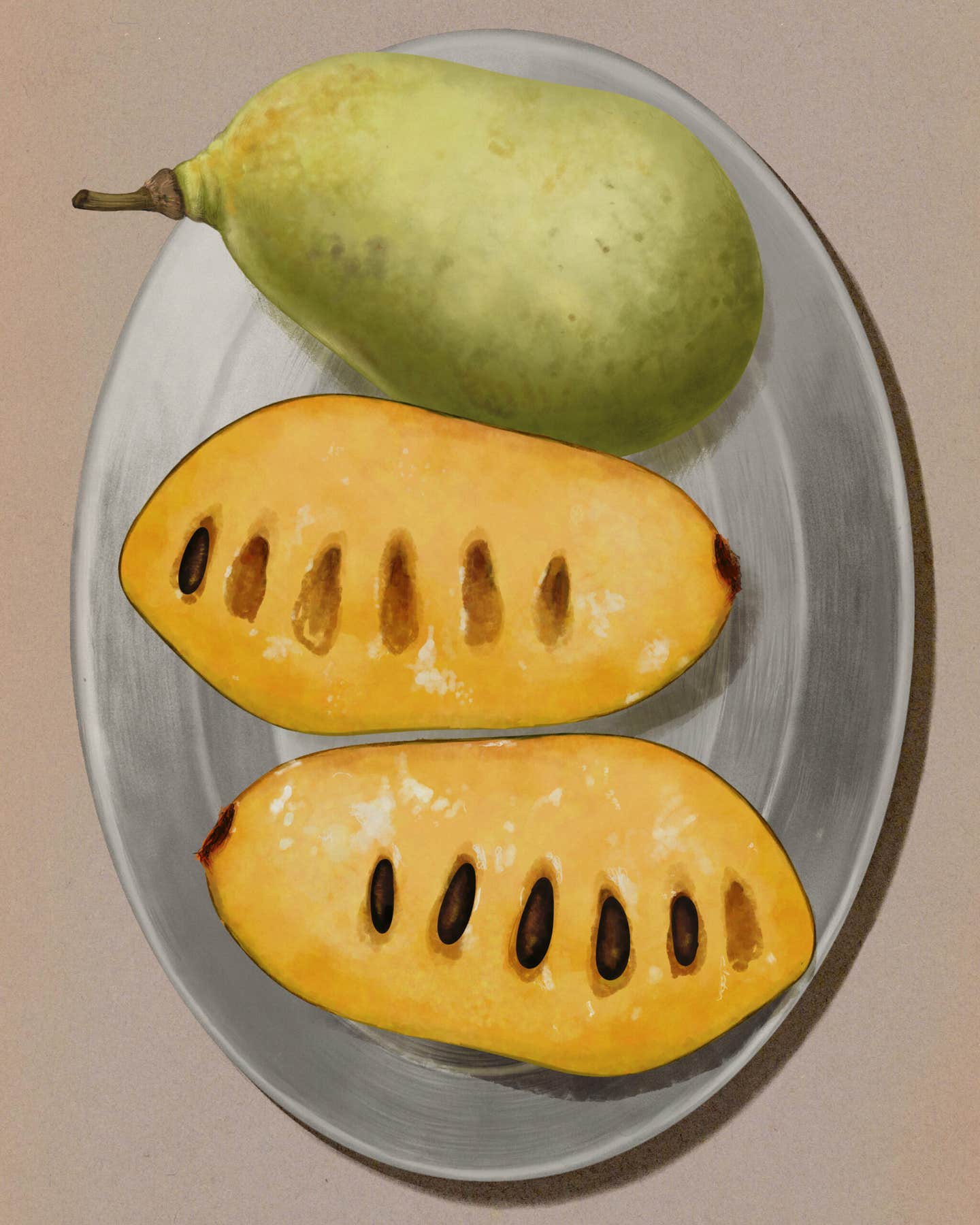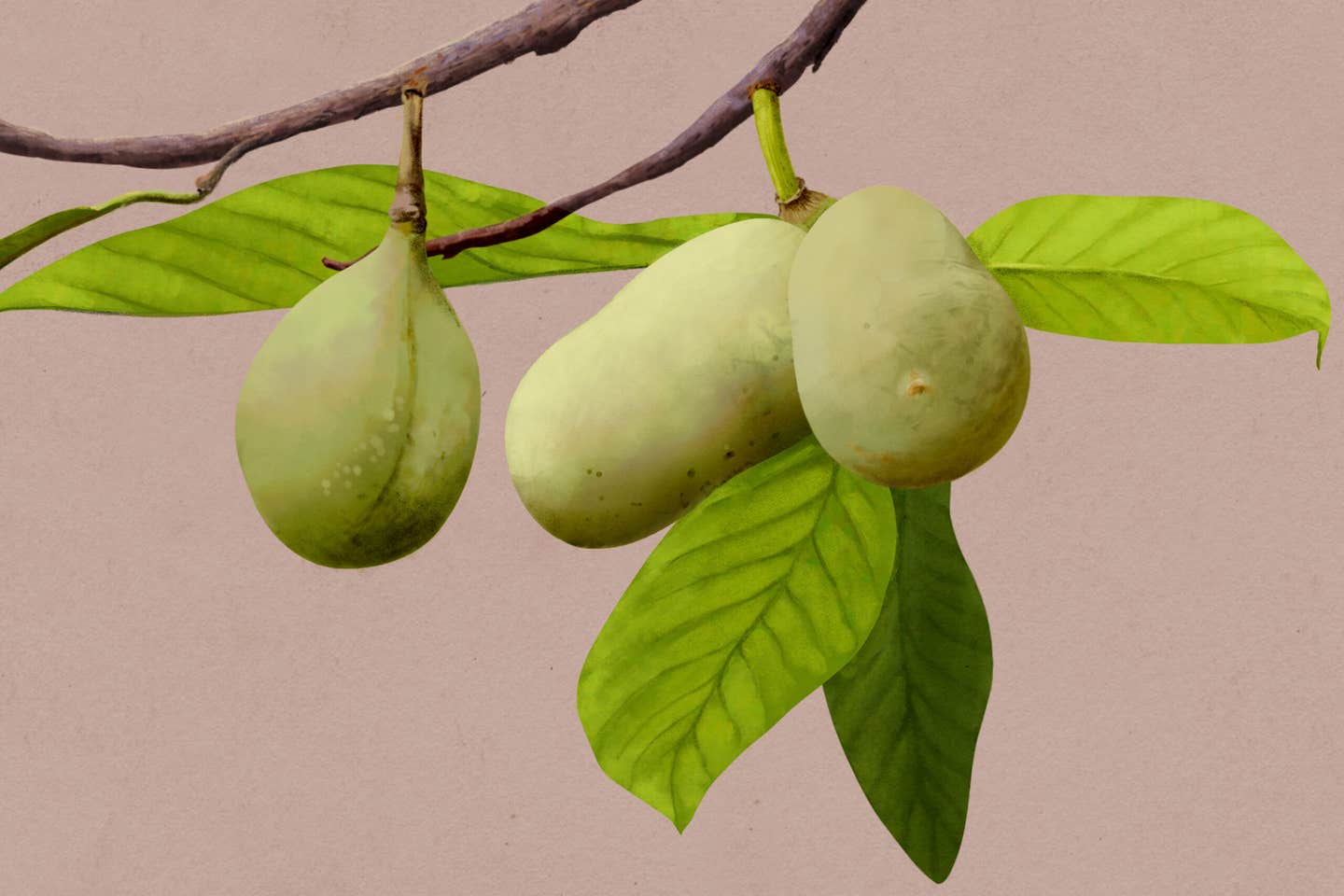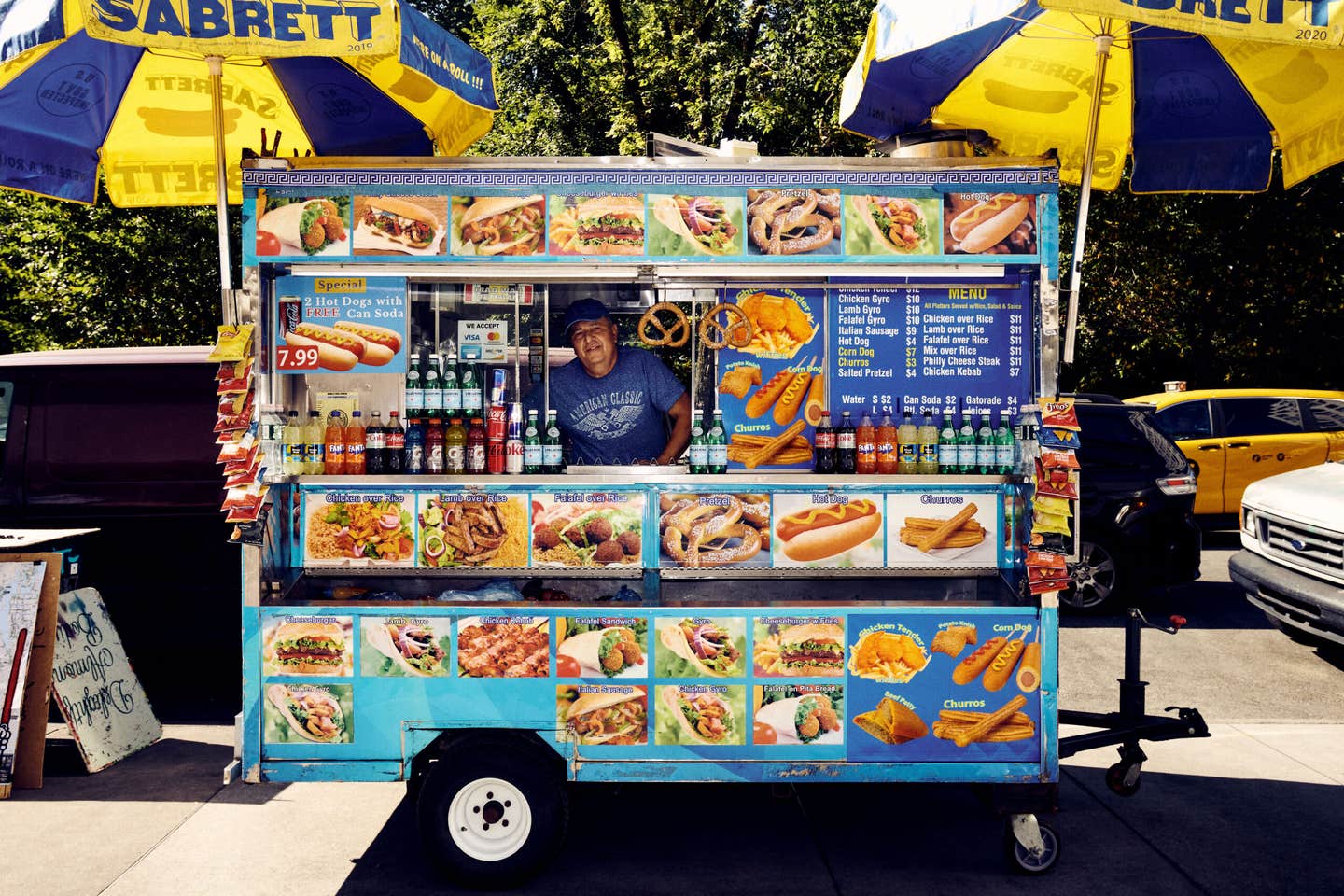The Untapped Potential of America’s Largest Edible Native Fruit
The sweet, custardy pawpaw is a national treasure we should all be eating more of, according to foragers and food activists.

Whenever Devon Mihesuah visited her grandparents’ house in Muskogee, Oklahoma in early autumn as a child, she would accompany her grandmother on foraging hunts. The treasures they were looking for? Pawpaw, the largest edible fruit native to North America.
Though decades have passed since those pawpaw-hunting adventures, Mihesuah, an enrolled citizen of the Choctaw Nation of Oklahoma, decided five years ago to plant a grove of the fruit trees in her family garden in Baldwin City, Kansas. After gathering seeds from the woods near her house, she sowed and cultivated them into seedlings she could plant. It takes up to 10 years for pawpaw seedlings to bear fruit, so it’ll be some time before Mihesuah can forage for pawpaw in her own backyard. When she finally does, the plants will offer a “thread,” as she puts it, to the lost history of her ancestors.
“I have tried to emulate what my grandparents had, and what their ancestors had, prior to being removed in the 1830s,” explains Mihesuah, referencing the 1830 Indian Removal Act that forced 100,000 Native Americans living east of the Mississippi River to relocate westward to what is now Oklahoma. There, displaced tribes could no longer find many of the foods that were familiar to them, including pawpaw.
This native fruit, which is rich in vitamin C and iron, might look like a squat potato, but it tastes sweet and tropical—as if a banana, pineapple, and mango were mixed together and spiked with vanilla. Though it grows wild in 26 states (from Eastern Canada down to Northern Florida, and as far west as Kansas, usually in shady areas near rivers and streams), “I can't tell you how many people have never heard of pawpaws, never tasted a pawpaw,” says Mihesuah. Pawpaw has a short fruiting season and even shorter shelf life. Once picked, the delicate fruit lasts only about a week, which explains why it’s difficult to find pawpaw outside of farmers markets and orchards (and some online retailers). It’s also challenging to eat, as the large oval-shaped seeds cling to the creamy flesh.

Still, year after year, Mihesuah, who writes about traditional Native foodways and is a professor of Native history and culture at the University of Kansas, counts down the weeks to pawpaw season, between late August and mid-October. She eats the custardy pulp the same way she has for decades: on the fly during her morning runs, when she finds them growing wild in low-lying shady woods near running water. “I'll shake [a tree] and I'll get maybe two,” she explains. “And I'll just stand there, break it in half, and just make a big mess.”
For Mihesuah, planting her own pawpaw trees is a small way of carrying on the legacy of Native traditions and honoring the Indigenous food sovereignty movement. Despite Native communities’ deep-rooted connection to the fruit, pawpaw has yet to become a well-known commodity across the U.S. But in recent years that’s started to change, as more people discover this seasonal gem that’s been hiding in plain sight all along.
Seeking a better understanding of native fruits and vegetables is what drove Hawa Lassanah to dive deep into pawpaw two decades ago. Well before she founded the DECA Farming Cooperative in Lancaster, Pennsylvania, Lassanah was looking for ways to tackle food injustice through the local Boys & Girls Club. To empower and educate the kids in the program, Lassanah began looking for a “culturally relevant” ingredient to cultivate—and came across pawpaw, one of the few fruits native to the region. “[It’s] an abundant resource that not a whole lot of people know about, that can help to sustain our families,” she recalls learning. When she realized that hundreds of pawpaw end up rotting on the ground under the trees that stud the Lancaster landscape, Lassanah set out to find a space-saving way to preserve the fruit. After months of research, she found her answer in freeze-drying, one of the best ways to preserve the fruit’s nutrients. She invested in a machine—and has now been freeze-drying pawpaw for two years, selling it locally and online and giving it away to those in need. A single pawpaw converts to just over a teaspoon of powder, and all it takes is a splash of water to revive it for cooking or baking. (The rehydrated fruit makes a tasty substitute in any recipe that calls for bananas.)
Casey Roe, a North Carolina forager, has also been touting the fruit’s nutritional and culinary merits. Since 2017, she’s been on a crusade to convince restaurants in and around Durham to add pawpaw to their seasonal menus. Early in her campaign, the vast majority of the chefs she approached had never heard of the fruit. Now, after years of hosting what she calls “pawpaw pawp-ups”—demos teaching people how to cut the fruit and extricate the seeds—she’s convinced her efforts to raise awareness have paid off. Working together with the similarly pawpaw-loving local brewery Fullsteam, Roe and her campaign gained traction, and more restaurants began experimenting with the fruit. Dashi, for example, a Japanese restaurant in Durham, turned foraged pawpaw into ice cream sandwiches. As for Fullsteam, the brewery has offered several pawpaw beers over the years, including its American Promise IPA. “We aim to connect the beer to the season, to encourage people to look for pawpaw fruit and learn more about it,” says owner Sean Lilly Wilson. The team also developed the Frozen Farm Slushie, a seasonal pawpaw cocktail made with bourbon, lime, and vanilla.
Roe says she’ll continue waving the flag for pawpaw until the fruit gets the recognition it deserves—even if it takes a while. Although at least 16 decades-old pawpaw festivals are held each year around the country, the fruit is still an enigma for most Americans. Most likely, not even everyone who lives in Paw Paw, West Virginia knows about the fruit after which their town is named.
For those lucky enough to find fresh pawpaw or source it frozen, the fruit can be incorporated into all sorts of dishes, from refreshing smoothies to ice cream. Kareem Queeman, the baker behind the shop Mr. Bake Sweets in Maryland, makes a pawpaw cake similar to banana bread, but swapping in the seasonal fruit. Mihesuah also likes mashing the fruit and serving it atop blue corn pancakes, or churning the creamy flesh into pawpaw sorbet or ice cream.
“It's an extraordinary food,” says Mihesauh. “I wish more people had an opportunity to try it.”
Keep Reading
Continue to Next Story










